Blog
Study Suggests Bunions Occur Due to Genetics, Not Always Due to Footwear
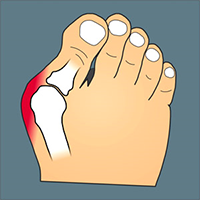 It is often believed that bunions and other various foot ailments occur because of ill fitting or unsupportive shoes such as high heels. However, information gathered by the Framingham Foot Study, led by Dr. Marian Hannan, suggests that certain foot problems are more likely to occur due to genetics in Caucasian men and in women of European descent. The study included 1,370 participants with an average age of 66 years and nearly 57% females involved. From 2002 and 2008, foot exams were conducted to verify foot deformities, hallux valgus, plantar soft tissue atrophy, and genetic analyses were estimated. The results concluded that bunions and other toe deformities were found to be highly hereditary while plantar soft tissue atrophy did not produce significant numbers. “These new findings highlight the importance of furthering our understanding of what causes greater susceptibility to these foot conditions, as knowing more about the pathway may ultimately lead to early prevention or early treatment,” stated Dr. Hannan.
It is often believed that bunions and other various foot ailments occur because of ill fitting or unsupportive shoes such as high heels. However, information gathered by the Framingham Foot Study, led by Dr. Marian Hannan, suggests that certain foot problems are more likely to occur due to genetics in Caucasian men and in women of European descent. The study included 1,370 participants with an average age of 66 years and nearly 57% females involved. From 2002 and 2008, foot exams were conducted to verify foot deformities, hallux valgus, plantar soft tissue atrophy, and genetic analyses were estimated. The results concluded that bunions and other toe deformities were found to be highly hereditary while plantar soft tissue atrophy did not produce significant numbers. “These new findings highlight the importance of furthering our understanding of what causes greater susceptibility to these foot conditions, as knowing more about the pathway may ultimately lead to early prevention or early treatment,” stated Dr. Hannan.
If you are suffering from bunion pain, consider treatment as soon as possible to avoid extended discomfort. For more information about bunion treatments, consult with one of our podiatrists of New York Foot and Ankle. Our doctors will attend to all of your foot and ankle needs.
What is a Bunion?
A bunion is formed of swollen tissue or an enlargement of boney growth, usually located at the base joint of the toe that connects to the foot. The swelling occurs by the bones in the big toe shifting inward, which impacts the other toes of the foot. This causes the area around the base of the big toe to become inflamed and painful.
Why do Bunions Form?
- Genetics – susceptibility to bunions are often hereditary
- Stress on the feet – poorly fitted and uncomfortable footwear that places stress on feet, such as heels, can cause bunions to form
How are Bunions Diagnosed?
Doctors often perform two tests – blood tests and x-rays – when trying to diagnose bunions, especially in the early stages of development. Blood tests help determine if the foot pain is being caused by something else, such as arthritis, while x-rays provide a clear picture of your bone structure to your doctor.
How are Bunions Treated?
- Refrain from wearing heels or similar shoes that cause discomfort
- Select wider shoes that can provide more comfort and reduce pain
- Anti-inflammatory and pain management drugs
- Orthotics or foot inserts
- Surgery
If you have any questions, please feel free to contact our offices located in Franklin Square and Bethpage, NJ. We offer the newest diagnostic and treatment technologies for all your foot and ankle needs.
Barefoot Runner Completes 101 Marathons for Children in Need
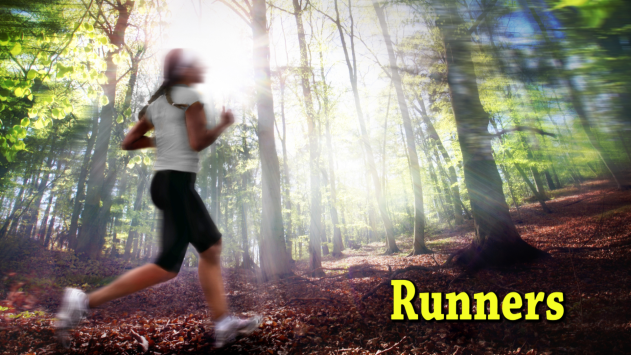 In an attempt to raise awareness this year for children living without proper shoes, former Guam resident Eddie Vega, has completed 101 marathons while running barefoot. Vega has raised nearly $12,000 that will provide shoes for many of those children in need. The 55 year-old did not intentionally decide to start barefoot running in marathons; he initially only began participating in the activity to reduce an injury incurred from a previous marathon. Although Vega has ran in over 100 marathons, he does not believe in being barefoot all of the time and has experienced criticism from avid believers of the barefoot lifestyle. “I do it to create awareness for 300 million kids with no shoes,” he states.
In an attempt to raise awareness this year for children living without proper shoes, former Guam resident Eddie Vega, has completed 101 marathons while running barefoot. Vega has raised nearly $12,000 that will provide shoes for many of those children in need. The 55 year-old did not intentionally decide to start barefoot running in marathons; he initially only began participating in the activity to reduce an injury incurred from a previous marathon. Although Vega has ran in over 100 marathons, he does not believe in being barefoot all of the time and has experienced criticism from avid believers of the barefoot lifestyle. “I do it to create awareness for 300 million kids with no shoes,” he states.
Barefoot running has its own share of benefits and disadvantages. To learn more about this trend, consider speaking to Dr. Laurence D. Landau and Dr. Corrine Renne of New York Foot and Ankle. Our doctor will explain the facts of barefoot running and help you decide if it’s a practice you’d like to take up.
Barefoot Running
The Impact of Barefoot Running
-Running without shoes changes the motion of your running, as most running is done by landing on the heel of the feet.
-Running barefoot requires a different way of running; the landing is done on the front part of the feet.
The Advantages of Barefoot Running
-When running and landing on the front feet, the impact on the feet and ankle is reduced, this can reduce stress injuries.
-It strengthens muscles in the feet and ankles and the lower legs.
-Balance of the body is improved and there is a greater sensory input from the feet to the rest of the body.
The Drawbacks of Barefoot Running
-No protection while running, makes it likely that runners will land on sharp objects and scrapes, bruises and cuts on the feet will result.
-Blisters may form.
-Possibility of plantar fascia problems.
-Risk of getting Achilles tendonitis.
So what can runners do to make barefoot running safe? It’s best to make a slow transition from running shoes to barefoot running. Once the feet begin to adjust, try walking, then jogging and gradually increasing the distance. Minimalist running shoes may also be an option.
If you have any questions, please contact our office located in Franklin Square and Bethpage, NY. We offer the newest diagnostic and treatment technologies for all your foot care needs.
Read more about Barefoot Running
Remedies for Swollen Feet and Ankles in Pregnant Women
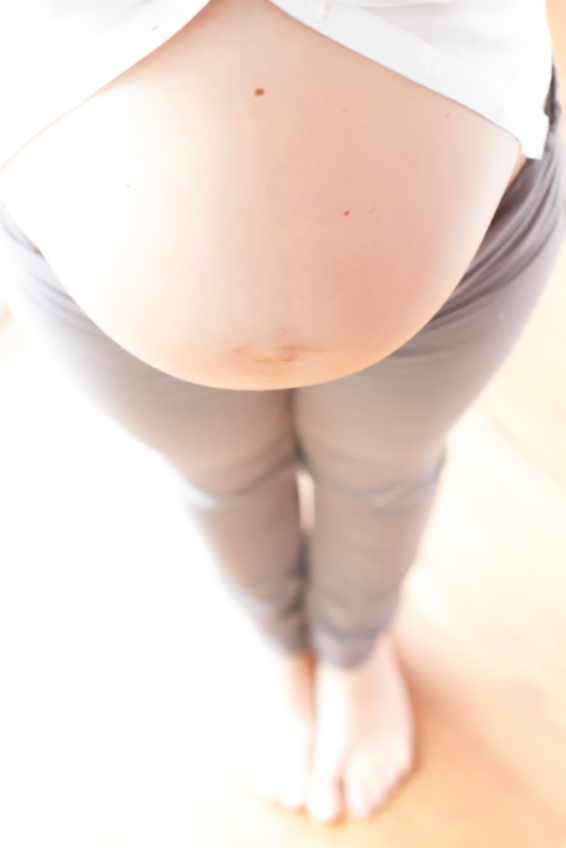 During pregnancy many women experience swelling of the feet, ankles, and other parts of the body; this swelling is known as edema or the buildup of the fluid inside of the tissues. Bold Sky has come up with a few ways to reduce swelling to make pregnancy a little bit easier. The consumption of salt is known to cause fluid retention in the body so drinking a lot of water and cutting down on salt intake will aid in the reduction of edema. When possible, rest your legs on an area that will make them higher than your waist when lying down. This will help stimulate the blood flow in the legs in feet. Try avoiding heat or adding a cold compress to the mix for added comfort and swelling reduction.
During pregnancy many women experience swelling of the feet, ankles, and other parts of the body; this swelling is known as edema or the buildup of the fluid inside of the tissues. Bold Sky has come up with a few ways to reduce swelling to make pregnancy a little bit easier. The consumption of salt is known to cause fluid retention in the body so drinking a lot of water and cutting down on salt intake will aid in the reduction of edema. When possible, rest your legs on an area that will make them higher than your waist when lying down. This will help stimulate the blood flow in the legs in feet. Try avoiding heat or adding a cold compress to the mix for added comfort and swelling reduction.
Pregnant women with swollen feet can be treated with a variety of different methods that are readily available. For more information about other cures for swollen feet during pregnancy, speak to Dr. Laurence D. Landau and Dr. Corrine Renne of New York Foot and Ankle Our doctors will assist you with all of your foot and ankle concerns and answer any of your related questions.
What foot problems can arise during pregnancy?
One problem that can occur is over-pronation, which occurs when the arch of the foot flattens and tends to roll inward. This can cause pain and discomfort in your heels while you’re walking or even just standing up, trying to support your baby.
Another problem is edema, or swelling in the extremities. This often affects the feet during pregnancy, but tends to occur in the later stages.
How can I keep my feet healthy during pregnancy?
- Wearing orthotics can provide extra support for the feet and help distribute weight evenly
- Minimize the amount of time spent walking barefoot
- Wear shoes with good arch support
- Wear shoes that allow for good circulation to the feet
- Elevate feet if you experience swelling
- Massage your feet
- Get regular, light exercise, such as walking, to promote blood circulation to the feet
If you have any questions, please contact our offices located in ranklin Square and Bethpage, NY. We offer the newest diagnostic and treatment technologies for all your foot care needs.
Read the more about Pregnancy and Foot Health
Wearing Flatforms Can Lead to Ligament Tears
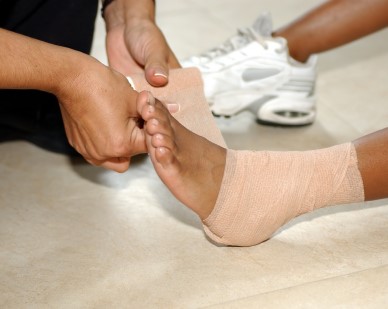 Many people, including famous idols like Willow Smith, Kate Bosworth, and Miley Cyrus, have recently been seen sporting “flatforms,” a new shoe designed to mix elements of flats and platforms. While this fashionable new item provides wearers with the benefit of a few extra inches of height, it also comes with some severe drawbacks.
Many people, including famous idols like Willow Smith, Kate Bosworth, and Miley Cyrus, have recently been seen sporting “flatforms,” a new shoe designed to mix elements of flats and platforms. While this fashionable new item provides wearers with the benefit of a few extra inches of height, it also comes with some severe drawbacks.
Flatforms cause the ankles to move in ways they aren’t biomechanically designed to. This can lead to painful ligament damage if they’re worn too much, as one journalist for Vogue magazine wrote about after finding out the hard way. It remains to be seen if the potential foot risks that come with wearing flatforms will be enough to derail their current popularity.
Shoes like flatforms that don’t offer proper foot support can cause really painful damage to the feet and ankles. If you have a foot condition that arose from wearing trendy footwear too often, think about calling podiatrists Dr. Laurence D. Landau and Dr. Corrine Renne of New York Foot and Ankle. Our doctors will assess the problem and explain how getting supportive shoes will help prevent similar issues in the future.
The Importance of Proper Foot Support
Walking is an everyday function for both men and women, and in order to keep your body’s balance in order, you are going to need shoes that provide the proper kinds of support.
Poor foot support can cause pain and discomfort in the lower back, hips, knees, neck and shoulder. It also can lead to emotional stress, and physiological changes in the body. In order to avoid these problems, you must have proper foot support.
The arch is the most important part of the foot, which is where most of the support and balance of your feet lies. The arch of your foot varies in height, and as you age, this height can change. Proper foot support will help musculoskeletal issues, which causes inactivity or disability.
When looking for shoes that give proper support to your feet, you should refrain from wearing ill-fitting shoes.
Shoes to Consider:
- Good heel and arch support
- Have proper length and width for your feet
- Avoid tight/cramped shoes
For more information about Proper Foot Support, follow the link below.
If you have any questions, please contact one of our offices in Franklin Square and Bethpage, NY. We offer the newest diagnostic and treatment technologies for all your foot care needs.
Read more about Proper Foot Support
Baylor College Professor’s Tips for High Heel Wearers this Holiday Season
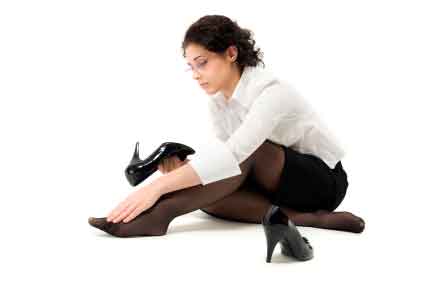 According to Baylor College of Medicine assistant professor Dr. Jason Ahuero, women should be sensible about how often they wear high heels. Wearing high heels regularly can lead to many foot problems such as foot pain and ankle sprains. Ahuero states that women should not wear heels for long periods of time and they should alternate heel height if they are unable to just wear flats. High heel wearers should also roughen up the bottoms of their heels to avoid slipping during inclement weather. When buying new high heels, Ahuero suggests that women have their foot measured each time, purchase shoes with thicker heels for stability, and to avoid high heels that are uncomfortable to wear. At the end of a day of wearing high heels, elevating the feet as well as icing them may reduce any pain or swelling.
According to Baylor College of Medicine assistant professor Dr. Jason Ahuero, women should be sensible about how often they wear high heels. Wearing high heels regularly can lead to many foot problems such as foot pain and ankle sprains. Ahuero states that women should not wear heels for long periods of time and they should alternate heel height if they are unable to just wear flats. High heel wearers should also roughen up the bottoms of their heels to avoid slipping during inclement weather. When buying new high heels, Ahuero suggests that women have their foot measured each time, purchase shoes with thicker heels for stability, and to avoid high heels that are uncomfortable to wear. At the end of a day of wearing high heels, elevating the feet as well as icing them may reduce any pain or swelling.
High heels are very fashionable and a necessity to some, but they can cause a tremendous about of harm to the feet and ankles. To learn more, contact Dr. Laurence Landau and Dr. Corrine Renne of New York Foot and Ankle. Our doctors will answer all of your foot- and ankle-related questions.
Effects of High Heels on the Feet
High heels are popular shoes among women because they are associated with femininity. Despite their appeal, they can cause many health problems if worn too frequently.
What parts my body will be affected by high heels?
- Ankle Joints
- Achilles Tendon – may shorten and stiffen with prolonged wear
- Balls of the Feet
- Knees – heels cause the knees to bend constantly, creating stress on them
- Back – they decrease the spine’s ability to absorb shock, which may lead to back pain. Also, the vertebrae of the lower back may compress.
What kinds of foot problems can develop from wearing high heels?
- Corns
- Calluses
- Hammertoe
- Bunions
- Morton’s Neuroma
- Plantar Fasciitis
How can I still wear high heels and maintain foot health?
If you want to wear high heeled shoes, make sure that you are not wearing them every day, as this will help prevent long term physical problems. Try wearing thicker heels as opposed to stilettos to distribute weight more evenly across the feet. Always make sure you are wearing the proper shoes for the right occasion, such as sneakers for exercising. If you walk to work, try carrying your heels with you and changing into them once you arrive at work.
If you have any questions, please feel free to contact one of our offices located in Franklin Square and Bethpage, NY. We offer the newest diagnostic and treatment technologies for all your foot and ankle needs.
Read more about the Effects of High Heels
University of Nottingham Study finds ways to combat Ingrown Toenails
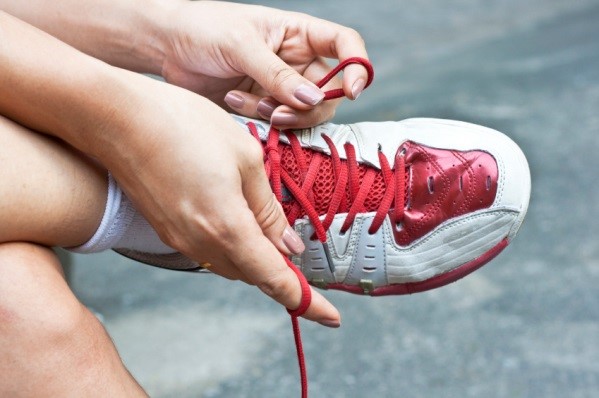 In a recent study physicists of the University of Nottingham in England took a closer look at the mechanical forces that act on fingernails and toenails—particularly the outward growth of the nail. Researchers have found that ingrown toenails form because of an imbalance in the forces acting on them from nail growth. Nails that grow too quickly tend to have a nail edge that becomes more curved, which in turn makes it more likely for the far edges of the nail to poke down into the skin beside the nail—creating an ingrown nail. To combat ingrown nails, cut nails into a parabolic or oval shape rather than straight across at the end of the nail. Using this method will cause the forces acting on the nail and nail bed to balance, preventing the growth of ingrown nails.
In a recent study physicists of the University of Nottingham in England took a closer look at the mechanical forces that act on fingernails and toenails—particularly the outward growth of the nail. Researchers have found that ingrown toenails form because of an imbalance in the forces acting on them from nail growth. Nails that grow too quickly tend to have a nail edge that becomes more curved, which in turn makes it more likely for the far edges of the nail to poke down into the skin beside the nail—creating an ingrown nail. To combat ingrown nails, cut nails into a parabolic or oval shape rather than straight across at the end of the nail. Using this method will cause the forces acting on the nail and nail bed to balance, preventing the growth of ingrown nails.
Ingrown toenails can become painful if they are left unattended. To learn more, consult with one of our podiatrists of New York Foot and Ankle. Our doctors will provide you with quality foot and ankle treatment.
Ingrown Toenails Causes
Ingrown toenails occur when a toenail grows sideways into the bed of the nail, causing pain, swelling, and possibly infection.
There are a number of risk factors for ingrown toenails. Some include cutting your nails too short, participating in strenuous sports, diabetes, obesity, and fungal infection. Some are genetically predisposed to ingrown nails, although wearing ill-fitting or damp shoes can exacerbate the problem.
Treatment
There are a number of steps you can take to treat ingrown nails:
-Let your toenails grow out
-Soak the toes in hot water with antibiotic soap or Epsom salts
-Placing a piece of cotton under the affected nail may allow the toe to grow up instead of into the nail bed
-Rest with your feet up
If however, your pain is severe, or you see red streaks running up your leg, you should see a podiatrist. Your podiatrist may make a small incision and remove part of the toe nail to relieve the pressure. A local anesthetic may be used to lessen the discomfort of the operation. Topical medication may also be prescribed to prevent the regrowth of the problem nail.
If you have any questions, please contact one of our offices in Franklin Square and Bethpage, NY. We offer the newest diagnostic and treatment technologies for all your foot care needs.
Read more about Ingrown Toenails
Queens Park Rangers, FC Midfielder Set to Play Liverpool Game with Broken Toe
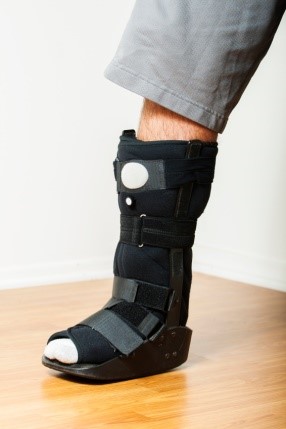 Queens Park Rangers Football Club based in White City, London is considering allowing midfielder Niko Kranjcarto play the next couple of games despite having a broken toe. Kranjcar has become a very important player to the team recently and all, including himself and his coaches, would like him play QPR’s next game against Liverpool.
Queens Park Rangers Football Club based in White City, London is considering allowing midfielder Niko Kranjcarto play the next couple of games despite having a broken toe. Kranjcar has become a very important player to the team recently and all, including himself and his coaches, would like him play QPR’s next game against Liverpool.
If Kranjcar chooses to play, he risks hurting the injury even more and potentially keeping himself from playing for even longer than if he just let the current injury heal. “They were talking about Niko being out for five or six weeks, but he wants to get it injected and play.” states QPR manager, Harry Redknapp.
Broken toes are unpleasant injuries that can make walking tough and can cause a lot of problems if not healed properly. To get assistance with this type of condition, call one of our podiatrists of New York Foot and Ankle Associates. Our doctors will diagnose which bone in your toe is broken and get you an appropriate form of treatment.
What to Know About a Broken Toe
Although most people try to avoid foot trauma such as banging, stubbing, or dropping heavy objects on their feet, the unfortunate fact is that it is a common occurrence. Given the fact that toes are positioned in front of the feet, they typically sustain the brunt of such trauma. When trauma occurs to a toe, the result can be a painful break (fracture). Another type of trauma that can break a toe is repeated activity that places stress on the toe for prolonged periods of time.
Symptoms of a Broken Toe
- throbbing pain
- swelling
- bruising on the skin and toenail
- the inability to move the toe with ease.
- toe appears crooked or disfigured
- tingling or numbness in the toe
- injured person experiences fever or chills throughout their body, and when there is an open, bleeding wound present on the toe.
Generally, a minor toe break will heal without long-term complications, but it is important to discontinue activities that put pressure on the toe. It is best to stay off of the injured toe with the affected foot elevated on pillows. Swelling can be alleviated by placing an ice pack on the broken toe for 15 minutes every two hours during the first two days after the fracture.
For more information about Broken Toes, follow the link below.
If you have any questions, feel free to contact one of our offices located in Franklin Square and Bethpage, NY. We offer the latest diagnostic and treatment technologies for all your foot care needs.
Read more about Broken Toes
Study Finds BMI Predictive of Foot Joint Pain in Middle Aged Women
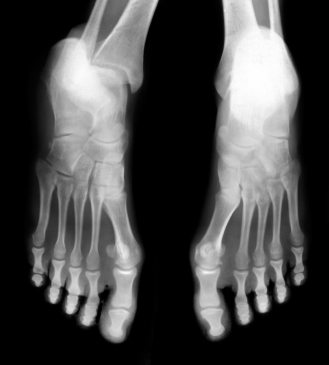 According to the Chingford Women’s Study conducted in the United Kingdom, middle aged women with a higher Body Mass Index (BMI) are more likely to have joint pain in the feet. The study included 1,003 women from the ages 45 to 64 years of age and each participant was seen by a professional at least once a year for twenty years starting in 1988. In between the 10th and 15th year of the study, 639 women had described foot joint pain. Between that period of five years, 49.6% and 47.6% of women had gained or lost weight respectively. At both time periods, women with higher BMI’s had reported significant or persistent foot joint pain compared to women with lower BMI’s. The odds of developing foot pain between the 10th and 15th year of the study rose by 7.9% per unit of BMI.
According to the Chingford Women’s Study conducted in the United Kingdom, middle aged women with a higher Body Mass Index (BMI) are more likely to have joint pain in the feet. The study included 1,003 women from the ages 45 to 64 years of age and each participant was seen by a professional at least once a year for twenty years starting in 1988. In between the 10th and 15th year of the study, 639 women had described foot joint pain. Between that period of five years, 49.6% and 47.6% of women had gained or lost weight respectively. At both time periods, women with higher BMI’s had reported significant or persistent foot joint pain compared to women with lower BMI’s. The odds of developing foot pain between the 10th and 15th year of the study rose by 7.9% per unit of BMI.
Rheumatoid Arthritis and joint pain can become very painful and debilitating if left untreated. For more information about Rheumatoid Arthritis and its symptoms, consult with podiatrists, Dr. Corrine E. Renne and Dr. Laurence D. Landau, of New York Foot and Ankle. Our doctors will assess your condition and provide you with quality foot and ankle treatment.
What Is Rheumatoid Arthritis?
Rheumatoid Arthritis (RA) is an autoimmune disorder in which the body’s own immune system attacks the membranes surrounding the joints. Inflammation of the lining and eventually the destruction of the joint’s cartilage and bone occur, causing severe pain and immobility.
Rheumatoid Arthritis of the Feet
Although RA usually attacks multiple bones and joints throughout the entire body, almost 90 percent of cases result in pain in the foot or ankle area.
Symptoms
- Swelling & pain in the feet
- Stiffness in the feet
- Pain on the ball or sole of feet
- Joint shift and deformation
Diagnosis
Quick diagnosis of RA in the feet is important so that the podiatrist can treat the area effectively. Your doctor will ask you about your medical history, occupation, and lifestyle to determine the origin of the condition. Rheumatoid Factor tests help to determine if someone is affected by the disease.
For more information about rheumatoid arthritis please follow the link below.
If you have any questions, please contact one of our offices located in Franklin Square and Bethpage, NY. We offer the newest diagnostic and treatment technologies for all your foot care needs.
Read more on Rheumatoid Arthritis
Foot-shaped Running Shoe gives Runners room to Stretch
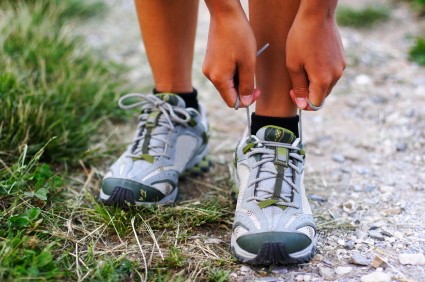 Shoe makers are now creating foot-shaped running shoes that follow the foot’s natural anatomic shape to allow room for the toes to stretch naturally. In the past, some hardcore runners have gone as far as removing their toenails to avoid the damage created from repetitively slamming their toes into the front of their narrow shoes. This action would create blackened toenails, which in recent years have become a twisted badge of honor for more intense runners. Fortunately, the creation of these foot-shaped shoes will keep toes from being ruined while also allowing for comfort and balance of the foot. Shoes include Altra Paradigm, ZEMgear Terra Tech, Merrell Bare Access, and Topo Runduro.
Shoe makers are now creating foot-shaped running shoes that follow the foot’s natural anatomic shape to allow room for the toes to stretch naturally. In the past, some hardcore runners have gone as far as removing their toenails to avoid the damage created from repetitively slamming their toes into the front of their narrow shoes. This action would create blackened toenails, which in recent years have become a twisted badge of honor for more intense runners. Fortunately, the creation of these foot-shaped shoes will keep toes from being ruined while also allowing for comfort and balance of the foot. Shoes include Altra Paradigm, ZEMgear Terra Tech, Merrell Bare Access, and Topo Runduro.
Running shoes should be selected based on their comfort and support. For more information about what to look for in choosing a running shoe, consult with podiatrists Dr. Laurence Landau and Dr. Corrine Renne of New York Foot and Ankle. Our doctors will attend to all of your foot and ankle needs and provide you with quality treatment.
Choosing the Right Running Shoes for Your Foot Type
Running is a physical activity although fun, can put a lot of stress on the joints, bones and ligaments of the body. Injury and stress on the foot can be an important factor on which kind of shoe you’re wearing. Running shoes should be worn based on your foot type. It is important to find out what fits you based on cushioning, stability and motion.
Determining your type
Speak with a shoe specialist or retail professional to see what your foot type is. They will be able to identify and measure your arch type, stride and gait.
Running Mechanics
When you are running or walking in your shoes, every step determines how your foot is landing. Pronation is the natural rolling of your ankle from outside to inside during foot strike.
Pronation is a correct form of walking or running. It helps absorb shock and store energy from your lower extremities.
For more information about Choosing the Right Running Shoe, follow the link below.
If you have any questions, please feel free to contact one of our offices located in Franklin Square and Bethpage, NY. We offer the newest diagnostic and treatment technologies for all your foot and ankle needs.
Read more about Choosing the Right Running Shoe
Women’s High Heels increase risk for Morton’s Neuroma
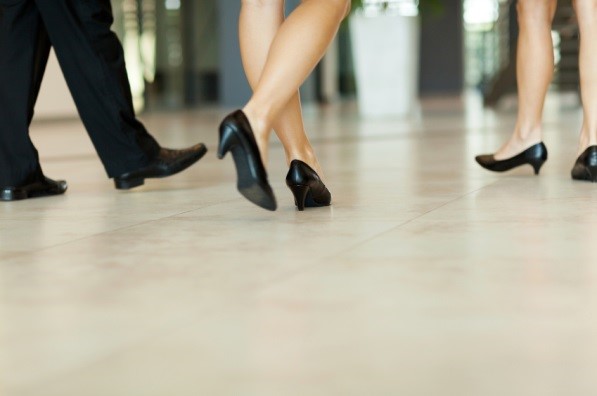 High heels and other ill-fitting shoes could be a prime cause of Morton’s Neuroma. Neuroma affects the nerves located between the toes, creating a sensation similar to stabbing while walking. It is believed that neuroma stems from compression, injury or damage to the nerve. Therefore women who wear high heels or narrow-fitting shoes are at particular risk to developing the condition. The nerve repairs itself if left untreated, using fibrous tissues that create thickening and enlargement. The disorder is aggravated by irregularities that interfere with optimal foot function, such as high arches, overpronation, and hypermobility.
High heels and other ill-fitting shoes could be a prime cause of Morton’s Neuroma. Neuroma affects the nerves located between the toes, creating a sensation similar to stabbing while walking. It is believed that neuroma stems from compression, injury or damage to the nerve. Therefore women who wear high heels or narrow-fitting shoes are at particular risk to developing the condition. The nerve repairs itself if left untreated, using fibrous tissues that create thickening and enlargement. The disorder is aggravated by irregularities that interfere with optimal foot function, such as high arches, overpronation, and hypermobility.
The disorder can be avoided by wearing shoes that are wide and deep in the toe area and that do not apply pressure to the metatarsals, or bones in the balls of your feet. Metatarsal support pads can also help by removing pressure from the nerve and promoting your foot’s natural anatomical position.
Morton’s neuroma can be a difficult condition to contend with. If you are experiencing symptoms of Morton’s Neuroma, speak to podiatrists Dr. Laurence Landau and Dr. Corrine Renne of New York Foot and Ankle. Our doctors will diagnose and treat your feet accordingly.
Morton’s Neuroma
Morton's neuroma is a painful foot condition that commonly affects the areas between the third and fourth toe and the ball of the foot, although other areas of the foot are also susceptible to this condition. Morton’s neuroma is caused by an inflamed nerve in the foot that is being squeezed and aggravated by surrounding bones. Women are more likely than men to have an occurrence of this foot condition.
What Increases the Chances of having Morton’s Neuroma?
-Ill-fitting high heels or shoes that add pressure to the toe or foot area.
-Jogging, running and any sports that involve constant impact to the foot area.
-Flat feet, bunions, and any other foot deformity may put you at a higher risk for developing Morton’s neuroma.
If you suspect that you may have this condition, you should visit your podiatrist. A podiatrist will first conduct a thorough physical examination to check for palpable masses between the bones of the foot.
If you have any questions, please feel free to contact one of our offices located in Franklin Square and Bethpage, NY. We offer the newest diagnostic and treatment technologies for all your foot and ankle needs.
More...
Star Wars Production Halted After Hans Solo Breaks Foot
Harrison Ford brought production for the new Star Wars movie to a temporary standstill a few weeks ago when he broke his foot on set. While filming, Millennium Falcon’s door fell on his lower extremity, thus sending him to the hospital and forcing the producers to delay shooting for two weeks.
Ford seems to be healing quickly since it has been recently reported that he’s traded his cast and crutches for a simple bandage on set. According to Disney, his injury won’t stop Star Wars: Episode VII from being released in December 2015 as originally planned.
Work-related foot injuries can stop any project, even one as large and expensive as the new Star Wars movie. To get help for a foot condition you incurred while on the job, see podiatrists Dr. Corrine Renne and Dr. Laurence Landau of New York Foot and Ankle. Our doctors will get you the care you need and teach you how to avoid making the injury worse upon returning to work.
Working on Your Feet
Standing on your feet for long periods of time can cause stress and pain in your feet. Your whole body may experience change in terms of posture, back pain, bunions, callouses and or plantar warts. There are ways to avoid these conditions with proper foot care, smart choices and correct posture.
Positive Changes
Negative heeled shoe – choosing this shoe places the heel slightly lower than the ball of the foot. These are great for overall foot health. Find shoes that fit you correctly.
Go barefoot – our feet were not designed to be enclosed for hours, or all day. Try allowing yourself to expose your feet to air.
Eliminate Pain
Foot Exercises – performing simple exercises, incorporating yoga and stretches is beneficial. This will allow increased blood flow to the area and muscles of the foot.
Lakers Lose Third Team Member to Achilles tendon Injury
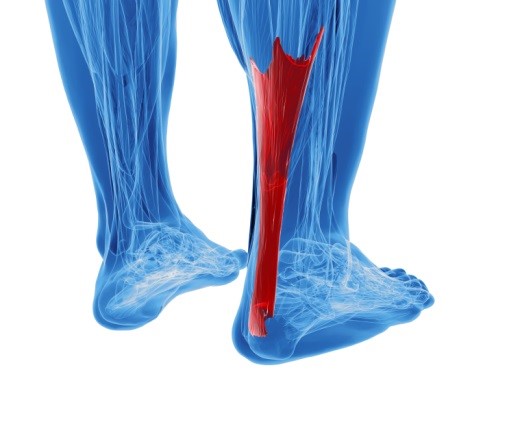 Xavier Henry of the Lakers will be out for the rest of the season due to a ruptured Achilles tendon that occurred during practice. The twenty-three year old was a huge asset to the team averaging a large amount of points after only being signed as a training-camp player. Last season it has been noted that Henry’s hard playing style aided the team, but caused plenty of wrist and knee problems that were treated with surgery during the off season. Coach Bryan Scott stated, “He just made a move, like most guys do when they mess up their Achilles. Nobody hit him or anything like that. He went down and pretty much said to us that he heard a pop.” Henry could still be traded despite the injury that is keeping him out for the rest of the season.
Xavier Henry of the Lakers will be out for the rest of the season due to a ruptured Achilles tendon that occurred during practice. The twenty-three year old was a huge asset to the team averaging a large amount of points after only being signed as a training-camp player. Last season it has been noted that Henry’s hard playing style aided the team, but caused plenty of wrist and knee problems that were treated with surgery during the off season. Coach Bryan Scott stated, “He just made a move, like most guys do when they mess up their Achilles. Nobody hit him or anything like that. He went down and pretty much said to us that he heard a pop.” Henry could still be traded despite the injury that is keeping him out for the rest of the season.
Achilles tendon injuries can be very painful. If you believe you are having problems with this condition, consult with one of our podiatrists of New York Foot and Ankle. Our doctors can treat your foot and ankle needs.
What is the Achilles Tendon?
The Achilles tendon is a tendon that connects the lower leg muscles and calf to the heel of the foot. It is the strongest tendon in the human body, and is essential for making movement possible. Because this tendon is such an integral part of the body, any injuries to it can cause severe difficulties and should immediately be presented to a doctor.
What are the symptoms of an Achilles Tendon Injury?
There are various types of injuries that can affect the Achilles tendon. The two most common are Achilles tendinitis and ruptures of the tendon.
Achilles Tendinitis Symptoms
- Inflammation
- Dull to Severe Pain
- Increased blood flow to the tendon
- Thickening of the tendon
Rupture Symptoms
- Extreme pain and swelling in the foot
- Total immobility
Treatment and Prevention
Achilles tendon injuries are diagnosed by a thorough physical evaluation. Often the doctor will order an MRI to confirm the diagnosis. Treatment will involve rest, physical therapy, and in some cases, surgery. However, various preventative measures can be taken to avoid these injuries.
For more information about Achilles Tendon Injuries, follow the link below.
If you have any questions, please contact one of our offices located in Franklin Square and Bethpage, NY. We offer the newest diagnostic and treatment technologies for all your foot care needs.
Read more about Achilles Tendon Injuries
John Simm’s Leg Injury Stops Production on TV Show
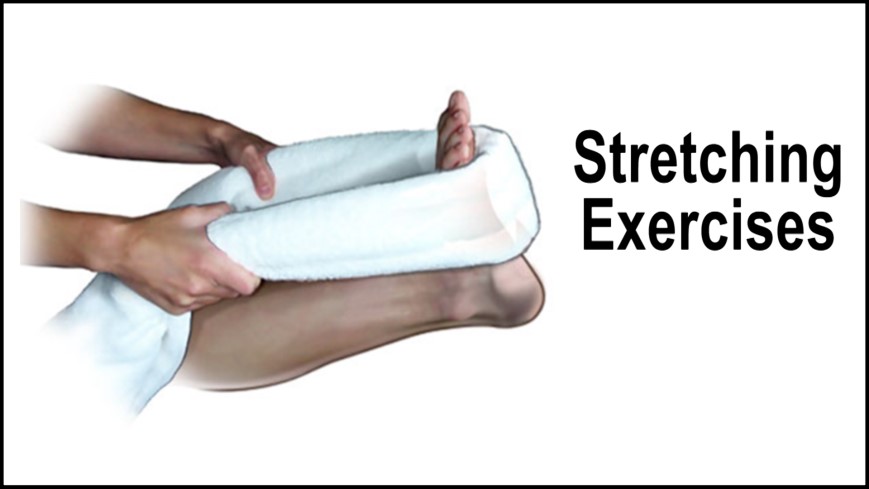 The production on John Simm’s new TV thriller PREY was put on hold after the actor sustained a leg injury during a strenuous scene. According to the Star, the demanding shot involved Simm’s character pulling himself out of a river.
The production on John Simm’s new TV thriller PREY was put on hold after the actor sustained a leg injury during a strenuous scene. According to the Star, the demanding shot involved Simm’s character pulling himself out of a river.
"We were on about the third take of me clambering up this wet verge,” the actor said. “As I launched myself forward my foot slipped and I felt my calf muscle tear." The show’s producers called for shooting to stop so that he could have the injury treated. Simms stated that he never experienced problems before, and he did proper stretching exercises and prepared correctly.
Stretching the feet properly is often key to avoiding injuries. For help learning how to do appropriate stretches, consult with Dr. Corrine Renne of New York Foot and Ankle. Dr. Renne can show you a wide range of techniques you can do to keep your feet flexible and strong.
Stretching Your Feet
Being the backbone of the body, the feet carry your entire weight and can easily become overexerted, causing cramps and pain. As with any body part, stretching your feet can serve many benefits. From increasing flexibility to even providing some pain relief, be sure to give your feet a stretch from time to time. This is especially important for athletes or anyone performing aerobic exercises, but anyone experiencing foot pain or is on their feet constantly should also engage in this practice.
Good ways to stretch your feet are:
- Crossing one leg over the others and carefully pull your toes back. Do 10-20 repetitions and repeat the process for each foot
- Face a wall with your arms out and hands flat against the wall. Step back with one foot and keep it flat on the floor while moving the other leg forward. Lean towards the wall until you feel a stretch. Hold for 30 seconds and perform 10 repetitions for each foot
- Be sure not to overextend or push your limbs too hard or you could risk pulling or straining your muscle
Individuals who tend to their feet by regular stretching every day should be able to minimize foot pain.
If you have any questions, please feel free to contact our office located in Franklin, NY. We offer the newest diagnostic and treatment technologies for all your foot care needs.
Read more about Stretching Your Feet
Blistered Feet do not deter Natalie Imbruglia’s Hike across Switzerland
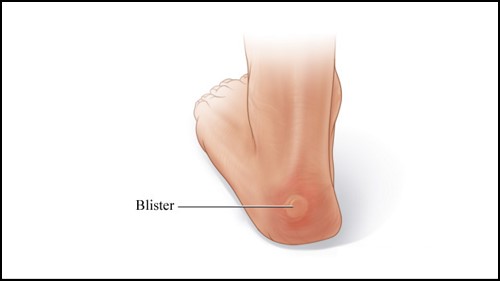 Natalie Imbruglia revealed extremely swollen and blistered feet after hiking over one hundred miles across Switzerland. As a part of the Strive challenge, the Australian actress and singer embarked on a seven-day journey across Switzerland on August 23rd. The challenge was in support of non-profit organization Virgin Money Giving, which is raising funds for projects dedicated to changing the way young people think. Imbruglia had a physiologist visit and tape up her beaten feet on the sixth day of her journey. The hike spanned from Switzerland’s south-western village of Verbier all the way to Zermatt in the Swiss Alps.
Natalie Imbruglia revealed extremely swollen and blistered feet after hiking over one hundred miles across Switzerland. As a part of the Strive challenge, the Australian actress and singer embarked on a seven-day journey across Switzerland on August 23rd. The challenge was in support of non-profit organization Virgin Money Giving, which is raising funds for projects dedicated to changing the way young people think. Imbruglia had a physiologist visit and tape up her beaten feet on the sixth day of her journey. The hike spanned from Switzerland’s south-western village of Verbier all the way to Zermatt in the Swiss Alps.
Untreated blisters can worsen and make mobility extremely difficult and painful. For quality blister treatment, see Dr. Corrine Renne of New York Foot and Ankle. Dr. Renne will attend to all of your foot and ankle needs and answer any of your related questions.
Blisters on the Feet
When tight or ill-fitting footwear is worn, many times a foot blister may develop. Blisters can even develop by constant rubbing from the shoe, often times leading to pain.
What is a Foot Blister?
A foot blister is a small pocket that is filled with fluid, forming on the upper most layer of the skin. Blisters are filled with clear fluid, and may lead to drainage of blood or pus if the area has become infected.
How do they Form?
Blisters of the feet are almost always the result of shoe rubbing and constant friction of the skin and material. Long periods of walking in shoes, sandals, or boots which don’t fit properly can result in a blister. Those who often have moisture or humidity in the feet, are prone to blister formation easily.
Prevention & Treatment
Proper care is vital to alleviate pain and prevent infection to the affected area of the foot. The best treatment is to leave them alone. New skin will develop under the blister and during the healing stages, your blister will pop.
For more information about Blisters on the Feet, follow the link below.
If you have any questions please feel free to contact our office located in Franklin, NY. We offer the newest diagnostic and treatment technologies for all your foot and ankle needs.
Read more about Blisters on the Feet
